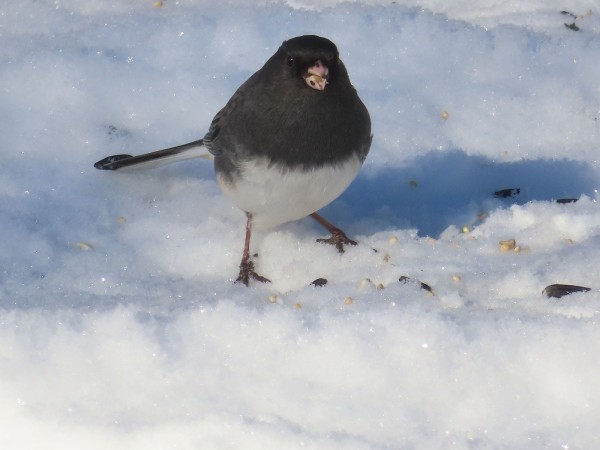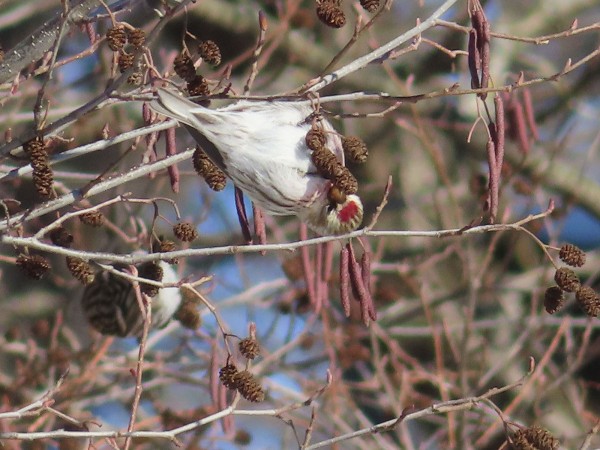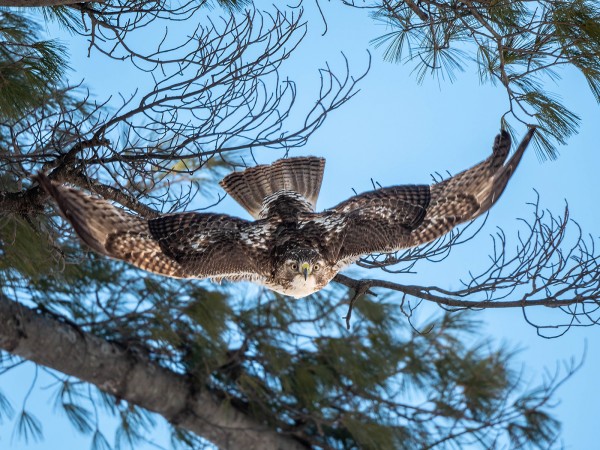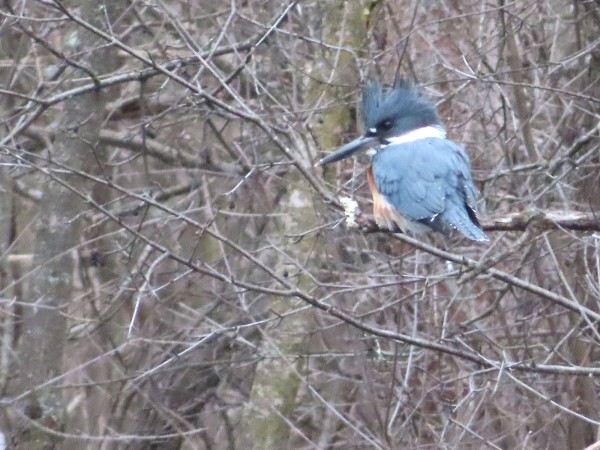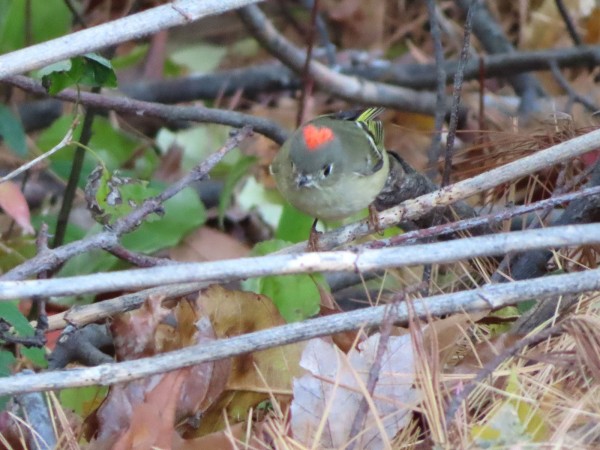Chuck's Birding Report #100
8 February - 14 February 2022
Dear fellow flock of birders,
So what’s up in the bird world of the Arboretum or around the periphery of the Arboretum?
What are birds doing that indicate that better times, as in spring, are ahead? As I said last week the Northern Cardinals were singing and they still were this past week. In fact many songbirds are singing now. The Black-capped Chickadees are singing their two-note song. In two places I heard Tufted Titmice calling and they never stopped. Of course I egged them on a bit by constantly whistling their songs back to them. They just kept following me. I need to stop encouraging them. I also saw a couple American Goldfinches that had a small patch of bright yellow plumage, especially in the neck area. I saw male Cardinals and male House Finches feeding females. What better way to encourage pair bonding. The chasing activities of the various woodpeckers continued too.
The winter birds like the Dark-eyed Juncos, the American Tree Sparrows and Common Redpolls are still here but I don’t see them quite as often. This makes me wonder how soon they will head north again. I do see a few Dark-eyed Juncos in the Arboretum but more often I see them out in the country feeding along the shoulders of roads. I always think of them as wearing a dark gray and white tuxedo. In addition those few white feathers on the sides of their tails always give them away. A photo of the Dark-eyed Junco is included.
The American Tree Sparrows behave similarly to the juncos. I see just a couple in the Arb but many more along roadsides.
There are still some Common Redpolls in the Arb feeding on seeds in the female catkins of Birches and Alders. They are also at my thistle feeder. I have never seen so many as I have this year. Last week I saw a little over 200 Common Redpolls at the southern end of Gardner Marsh. I know this because I took a photo of the flock as they left and then counted the Redpolls in the photo. Amazing! I’ve included a photo of a Redpoll that is assuming a common position, feeding on a catkin while upside down. I will miss them when they leave.
Last Tuesday on our bird walk we stopped by the Red-tailed Hawk nest that was used last year by a pair of adults who raised two young. We did see a Red-tailed hawk but it was not in the nest. Today when I walked by the nest I saw a RTHA carrying a stick to the nest. It is not building a new nest but repairing the nest from last year. Once it positioned the stick two Red-tailed Hawks flew out of the nest. I read a study done on these hawks in Green County, Wisconsin and they found that these hawks lay eggs most often in the second week of March. The incubation period or the time from egg laying to hatching is about 35 days. So our hawks are just preparing their nest right now. I don’t have a photo of the Red-tailed Hawks at the nest but I have borrowed a great action photo from Linda Deith who is one of our birders and a great photographer. The included photo shows a Red-tailed Hawk flying directly at Linda. She said it came close but did not hit her. Thanks Linda for sharing your photo.
Did you know that yesterday was Superb Owl Day? Think about it. Bob and Maggie Honig sent me that information. Thanks Bob and Maggie. I love it. My Superb Owl Day was last Friday not Sunday. I was in the Pinetum when I heard two crows making a lot of noise around a tall spruce. So I went to the spruce and looked all over it and finally saw the object of the crow’s attention. Perched deep in the spruce near the main trunk I could barely see a Great Horned Owl. I thought it would be impossible to photograph but I kept on looking for a clear view and finally found one that was good enough. Included is the photo of the GHOW. It gave me a look that was far from welcoming so I took a couple photos, got the hint and left.
Related to that is a mnemonic I learned long ago that helps me remember when they lay their eggs and when the eggs hatch. This mnemonic is very appropriate for today. It goes like this: The Great Horned Owls lay their eggs on Valentine’s Day and the eggs hatch on St. Patrick’s Day i.e., Feb. 14 to March 17 is the 31 day incubation period. This is an approximation but still useful.
What a coincidence! There is a Great Horned Owl hooting outside my window right now. Wow.Is it something I wrote?
I always stop by the Big Spring to see what birds I can find. Most every day the Great Blue Heron is there standing in the water behind branches overhanging the water either on the left or right side way out on the outflow of the spring. Some days a Belted Kingfisher comes rattling in and perches on a branch. It sits for several minutes looking around. When I saw it last it saw a small fish quite far from it and flew over, plunged into the water, grabbed the fish and flew back to its perch. It banged the fish on the perched branch, adjusted the fish to go down head first and then swallowed it. I stood there with my mouth open and when it was all over I kicked myself for not videoing the whole event. Included is a still photo of the Belted Kingfisher.
The Snowy Owls are still around in Dane County so I thought I would share another video made by one of our birders who is also a great photographer and videographer, Cynthia Carlson. She has several videos of birds on YouTube that you can watch. Take a look at this video of the Snowy Owls around the city of Madison and on the frozen Lake Monona. It’s mesmerizing! Thank you Cynthia Carlson! Here’s the link.
For my last photo I think it’s most appropriate for this day to show you a photo I took of a Ruby-crowned Kinglet in the Arboretum in November of 2020. This is a real photo and not enhanced in any way. In fact it is a bit out of focus because I could not hold my camera still when I saw what I was about to photograph. I’ve never seen anything like it before. Happy Valentine’s Day!!
That’s the Arboretum bird report for the past week.
I wish all of you good health and good birding in 2022,
Chuck

